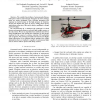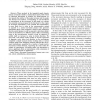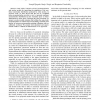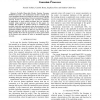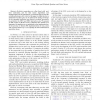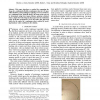73
Voted
IROS
2009
IEEE
15 years 7 months ago
2009
IEEE
— We consider the problem of autonomously flying a helicopter in indoor environments. Navigation in indoor settings poses two major challenges. First, real-time perception and r...
IROS
2009
IEEE
15 years 7 months ago
2009
IEEE
— The paper presents a novel strategy that learns to associate a grasp to an unknown object/task. A hybrid approach combining empirical and analytical methods is proposed. The em...
57
Voted
IROS
2009
IEEE
15 years 7 months ago
2009
IEEE
—The use of robots in assistive roles will be an increasingly significant application for robotics. Assistive robots need to physically interact with humans in a safe manner. We ...
76
Voted
IROS
2009
IEEE
15 years 7 months ago
2009
IEEE
— When analyzed in the tangential speed domain, human movements exhibit a multi-peaked speed profile which is commonly interpreted as evidence for submovements. At slow speeds, ...
103
Voted
IROS
2009
IEEE
15 years 7 months ago
2009
IEEE
— This article compares several parameterizations and motion models for improving the estimation of the nonlinear uncertainty distribution produced by robot motion. In previous w...
124
Voted
IROS
2009
IEEE
15 years 7 months ago
2009
IEEE
— Partially Observable Markov Decision Processes (POMDPs) provide a rich mathematical model to handle realworld sequential decision processes but require a known model to be solv...
77
Voted
IROS
2009
IEEE
15 years 7 months ago
2009
IEEE
Abstract— Robotics researchers are often faced with realtime constraints, and for that reason algorithmic and implementation-level optimization can dramatically increase the over...
92
Voted
IROS
2009
IEEE
15 years 7 months ago
2009
IEEE
Abstract— This paper describes our successful implementation of a robot that autonomously and strategically removes multiple blocks from an unstable Jenga tower. We present an in...
81
Voted
IROS
2009
IEEE
15 years 7 months ago
2009
IEEE
— There is a subset of objects for which interaction can provide numerous cues to those objects’ identity. Robots are often in situations where they can take advantage being ab...
84
Voted
IROS
2009
IEEE
15 years 7 months ago
2009
IEEE
—This paper introduces a method for computing the shape of a continuously-flexible (continuum) robot in 3-D space which includes gravity loading by applying Cosserat rod theory t...
